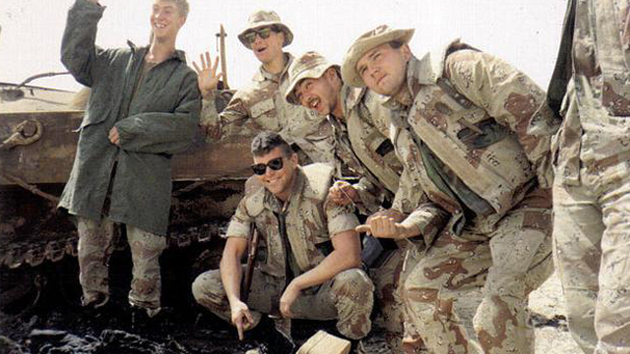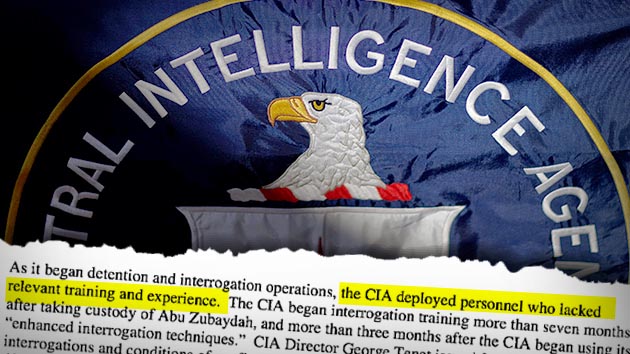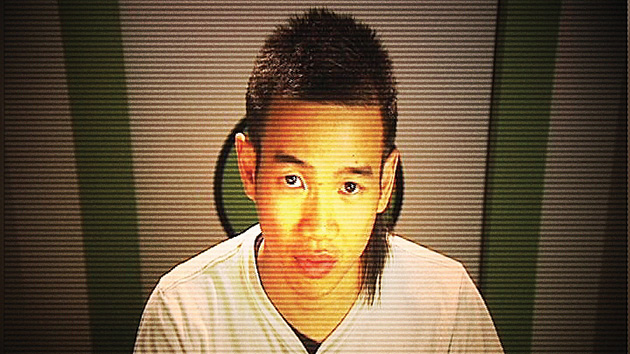It has taken Hollywood more than four decades to turn the infamous Stanford Prison Experiment into a feature film, but not for lack of trying. There have been numerous attempts, retired psychology professor Philip Zimbardo told me. One involved Leonardo DiCaprio, whose father, George, was one of his students. But they kept falling through, either due to the whims of Hollywood or because Zimbardo found the treatments “too grandiose.”
To use the university’s name in The Stanford Prison Experiment movie, which hits theaters on July 17, producer Brent Emery had to agree that he would portray the events of 1971 largely as they actually happened. (Zimbardo, a consultant on the film, has only one critique of the portrayal of him by actor Billy Crudup: “I said, ‘You’re Italian! You’ve got to move your hands more.’ And he couldn’t do it!”)
The true story is dramatic enough, in any case. Zimbardo, then 38, was interested in the “situational” dynamics—first demonstrated eight years earlier by psychologist Stanley Milgram—that can lead good people to do bad things. His research team divided paid student volunteers into two groups and had them assume the roles of inmates and guards: “These kids were all anti-war activists, hippies, long hair,” Zimbardo recalls. “They were against authority. Nobody wanted to be a guard.”
Drawing from Zimbardo’s experimental footage, the film crew painstakingly re-created the mock prison his research team had constructed in the basement of Stanford’s psych building. (“Everything is identical,” he says.) The dialogue between guards and prisoners is also true to life, much of it from Zimbardo’s 2007 book, The Lucifer Effect, which describes the proceedings in detail.
Little happened in the first 24 hours, and the professor feared his study was a bust. But on the second day the “prisoners” rebelled, barricading their cells with mattresses, ripping the numbers off their uniforms, and bad-mouthing the guards, who stepped in to forcibly crush the rebellion. At that moment, Zimbardo recalls, “it no longer was an experiment. It became a prison run by psychologists.”
As the guards ratcheted up their psychological aggression, the prisoners began having emotional breakdowns—real ones. Zimbardo acknowledges that it’s hard to believe, but “they became prisoners. A guard could say, ‘Spit in his face, tell him he’s a prick, tell him he’s a bastard,’ and they would do it without question.”
The experiment was meant to last two weeks, but Zimbardo ended it in six days after the guards, in a foreshadowing of Abu Ghraib, began forcing prisoners to simulate sodomy on one another. It was his future wife, Christina Maslach, who convinced him: “We had this big argument,” Zimbardo recalls, “in which she basically called me down to say, ‘These are not prisoners! These are not guards! These are boys, and they are suffering and you are responsible and you have become affected by your own experiment. You have become the superintendent!'”
The professor later testified in the defense of Ivan “Chip” Frederick, the staff sergeant at Abu Ghraib who had affixed wires to the fingers of the Iraqi man whose mock execution came to symbolize the scandal. Frederick also admitted he’d forced prisoners to masturbate and made them pile naked atop one another. (He was sentenced to eight years; none of his superiors was ever charged.)
Zimbardo argues in his book that any of us might have behaved similarly under the circumstances—overcrowding, incredible tedium, absence of oversight, and vague orders to soften up prisoners. “We know from lots of research that the human mind can rationalize anything,” he says. “Once you start on that slippery slope of evil, there is no going back for the vast majority of people.”















